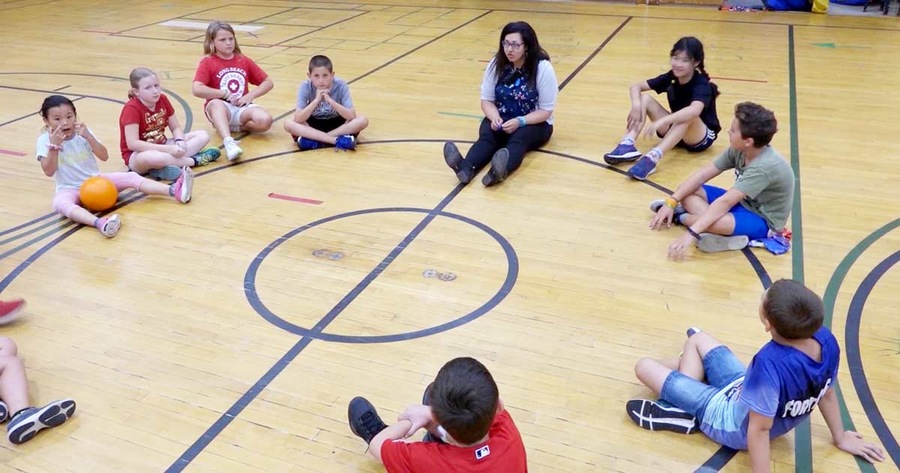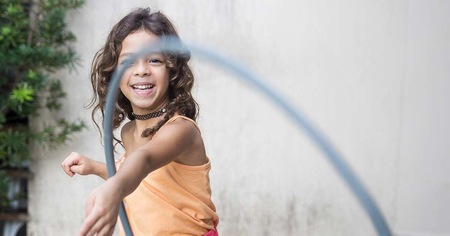This includes schools, afterschool programs and other youth development programs of all kinds. It's been observed over many years and in many cultures.
Why is this so?
Richard Hazler, Penn State University professor and researcher, explains that peer aggression is a normal part of development.
"People don't like to hear this," he observes, going on to explain that whenever children gain a new power over others, they generally don't know how to use it.
"So, they tend to abuse that power," Hazler continued. Power can be physical (size, strength, agility) or relational (popularity, affluence, being attractive). When children hit, tease and exclude others, educators have the opportunity to teach children how they should behave toward their peers.
However, there's a catch. It's not something that can just be taught once, and the children get it and instantly behave properly. Every new teacher and every new setting requires teaching these lessons again. It's the same for every school principal and every out-of-school time, or OST, program leader. They need to set the tone and provide the structure for creating a positive atmosphere.
School-age leaders are realizing that the old criminal justice approach to peer aggression doesn't work. Peer aggression will never be completely eliminated, even with severe punishment. The new educational approach to the problem involves creating a positive climate; educating staff and youth; imposing small, non-punitive consequences for aggressive behavior; and encouraging reflection, discussion, and evaluation.
The graphic below illustrates the differences between a criminal justice mindset and an educational mindset.

In addition to having an educational mindset, school-age programs need to provide a core community of respect and caring. Individual educators can do this by implementing these practices:
- Staff modeling behaviors they hope to see.
- Children and youth are welcomed unconditionally.
- Staff noticing and commenting on positive behaviors.
- Staff practice consistent discipline policies.
The staff must also operate as a team in deciding how to handle acts of peer aggression. - Parents are kept informed of behavior.
- Aggressive behaviors trigger predictable consequences.
- Children with behavior challenges receive additional supports.
- Administrators and frontline staff periodically review and adjust policies.
This handout, Outline for developing a positive climate in a school-age program, can be used to outline how to implement these eight practices in any program.
To ensure consistency and fairness, school counselor and author Stan Davis (2007) recommends that staff create a rubric outlining specific aggressive behavior and their corresponding consequences. This should be posted in the program space and shared with families so that when peer aggression occurs, everyone is clear on what will happen and there is less arguing.
To make the process manageable and efficient for staff, Davis also recommends creating three forms to help guide the process. Samples of these forms can be found in both of the online modules on positive peer interactions listed below.
- Behavior report.
- "Think about it" form.
- Letter to families.
The behavior report is used to track whether children have engaged in multiple acts of peer aggression. The "Think about it" form is used to help children reflect on what harm occurred and how it can be prevented in the future. The letter to families is used to keep adult family members in the loop. Adult family members sign the letter and return one copy to the program.
Liz Kennedy, an experienced program director at Burr Community Afterschool Program in Newton, Massachusetts, began using this aggression reduction program more than 10 years ago.
"What led me to adopt this method is its simplicity," she said. "It just seemed so easy and adaptable for my afterschool program. It has three parts basically, and the kids do most of the work."
She expressed her satisfaction with the program saying, "The biggest reward is that it works. It works for us. It's just so routine right now to us that it's just a part of our operation."
For an in-depth look at how to implement this system for reducing peer aggression, take these two online modules from Better Kid Care:
- Positive Peer Interactions in School-Age Programs—AdministratorsPositive Peer Interactions in School-Age Programs—Administrators
- Positive Peer Interactions in School-Age Programs—Frontline Staff (coming soon)
Want to learn more about youth development topics and receive professional development credit? Penn State Better Kid Care provides free* online professional development modules accessible anywhere, anytime for childcare and school-age professionals. Approximately 100 hours of school-age professional development are available, including topics in PYD, SEL and STEM. These modules are approved for professional development in 49 states. Access the modules here.
*There is no charge to read the content, view the videos, and download and print the activities. To take the assessment and receive a Certificate of Completion, you will be prompted to pay a $5 fee.
Eileen Wise is a youth development specialist at Penn State Better Kid Care and primary author of the PYD series and other modules for school-age professionals.
Additional Sources
Davis, Stan, and Julia Davis. 2007. Schools where everyone belongs: Practical strategies for reducing bullying. Research Press.
Photos courtesy of Penn State Better Kid Care.




